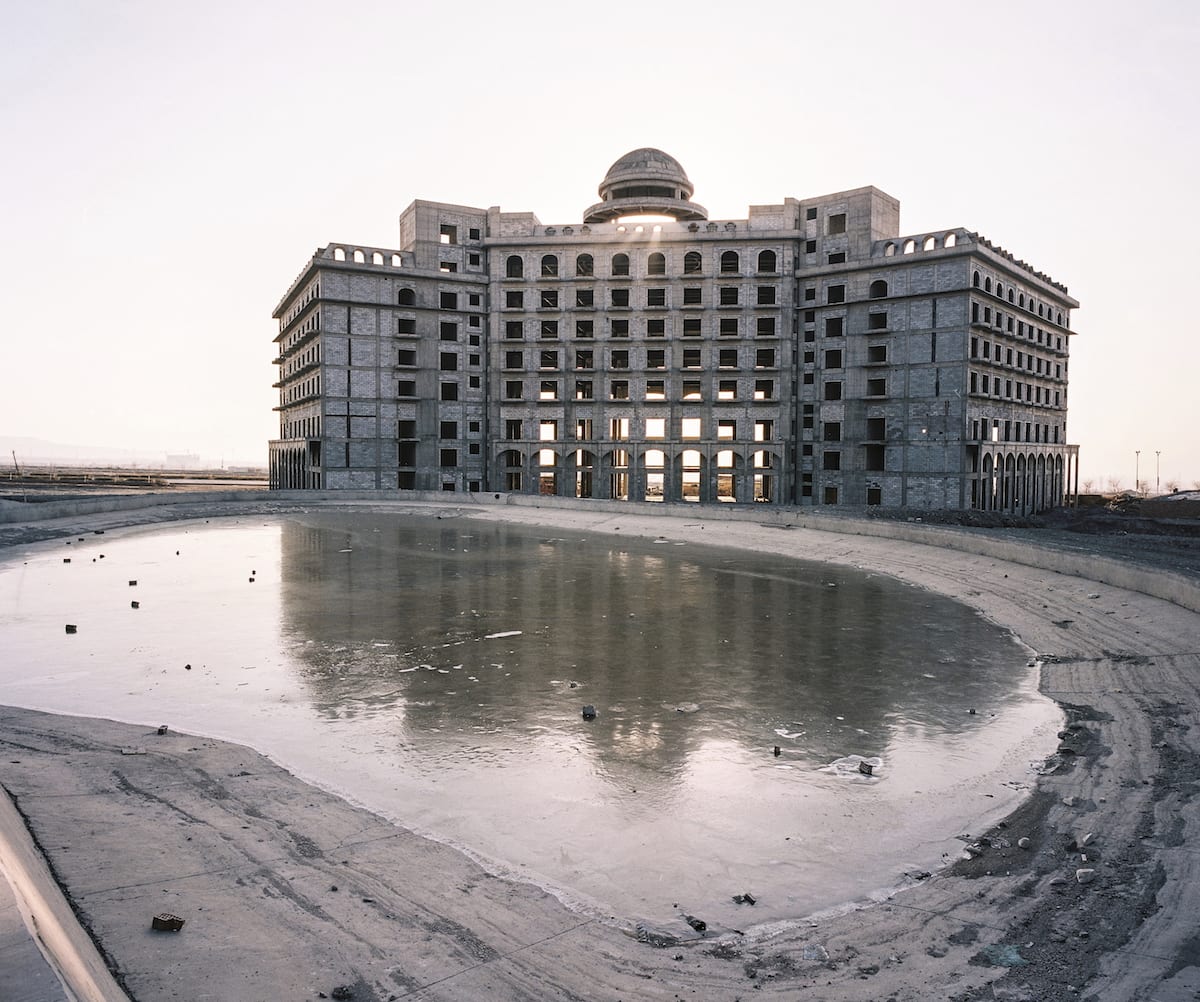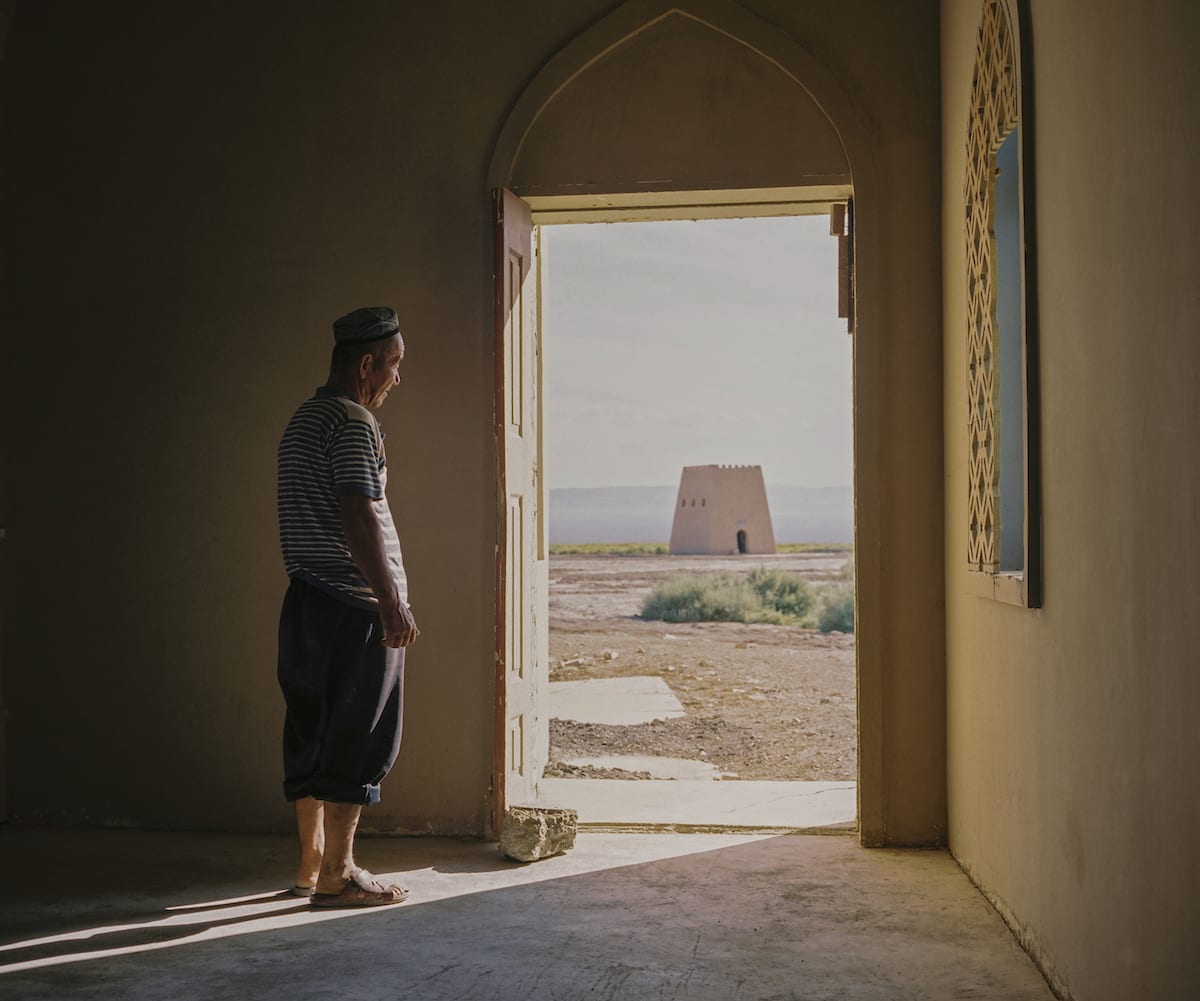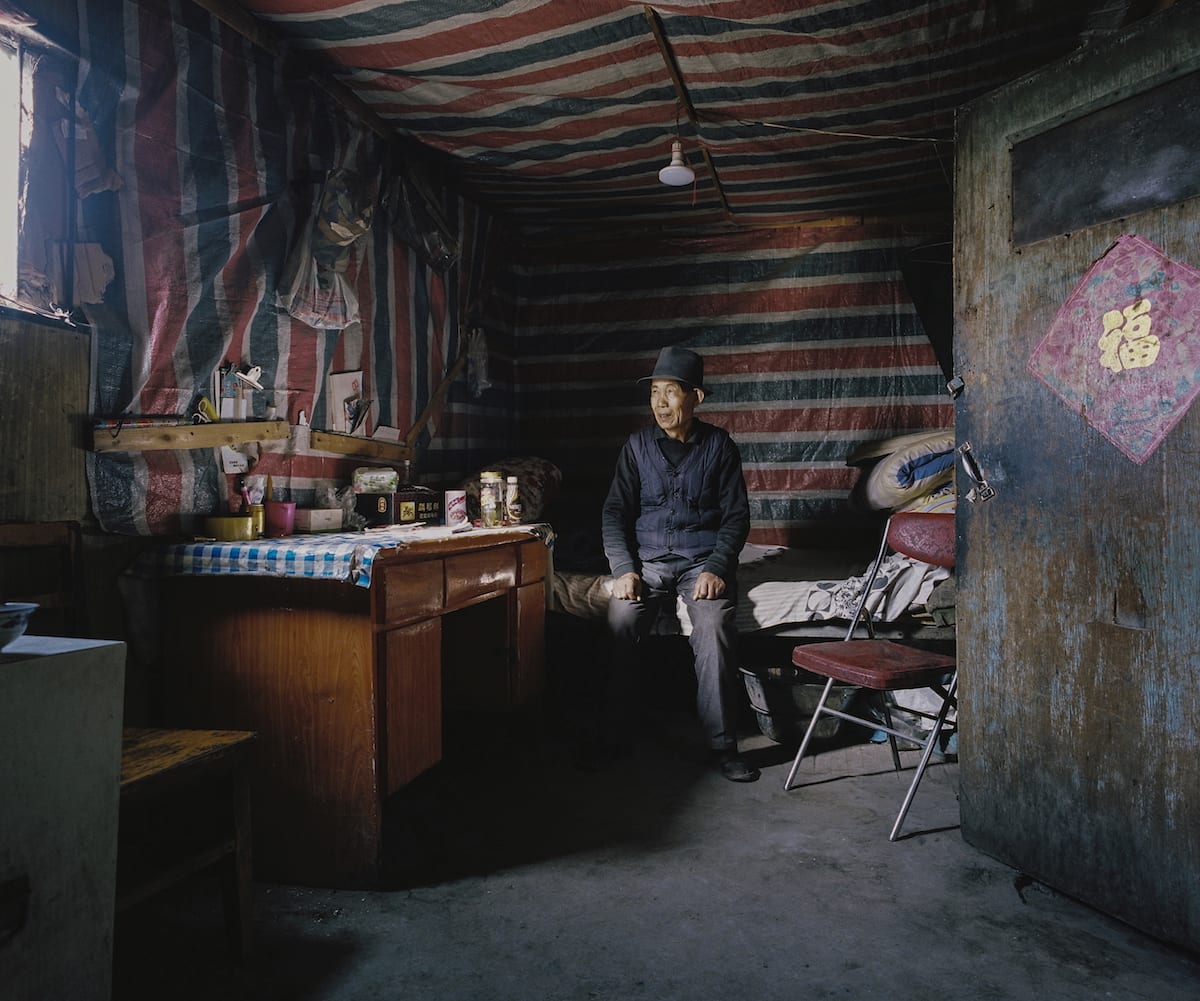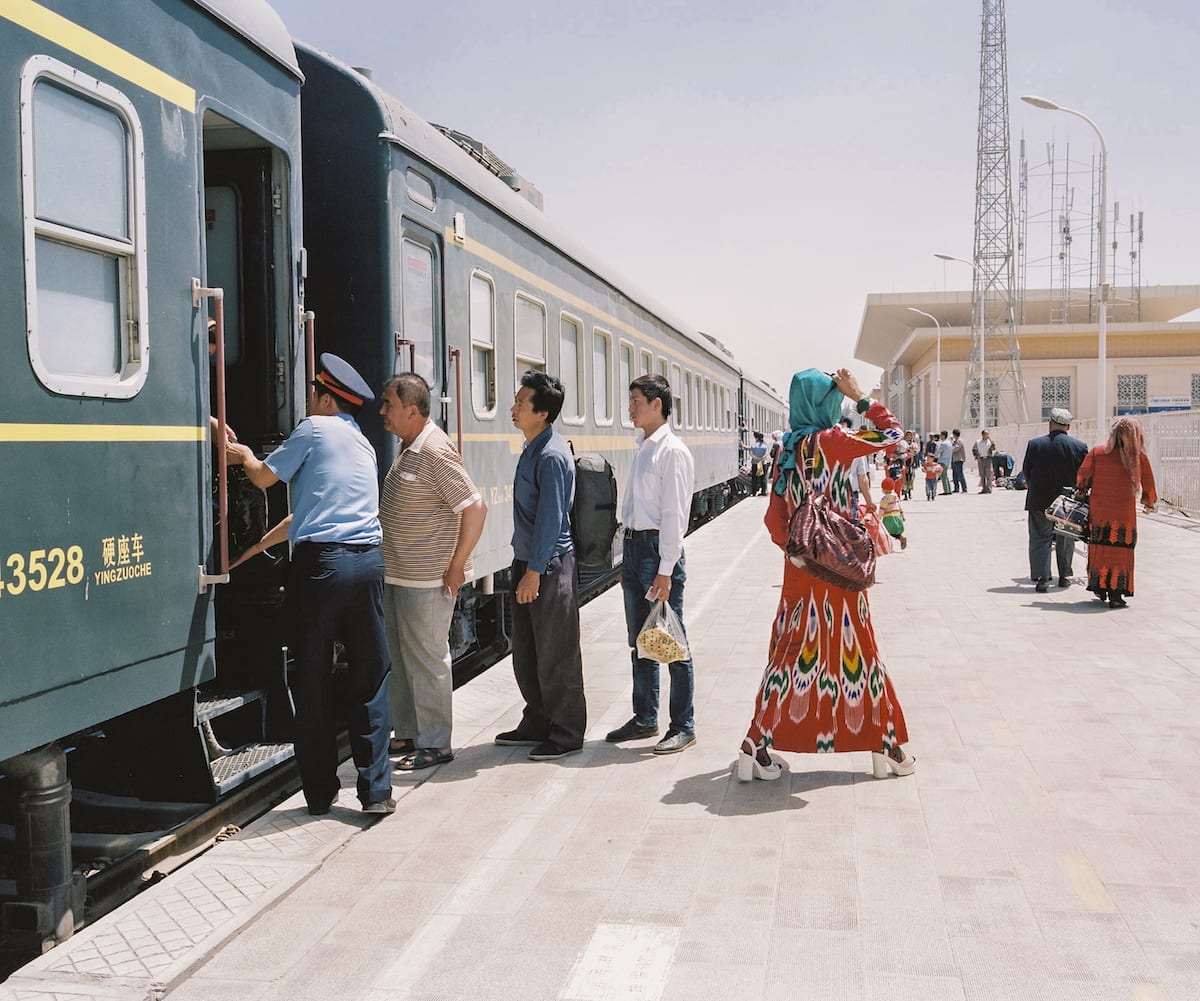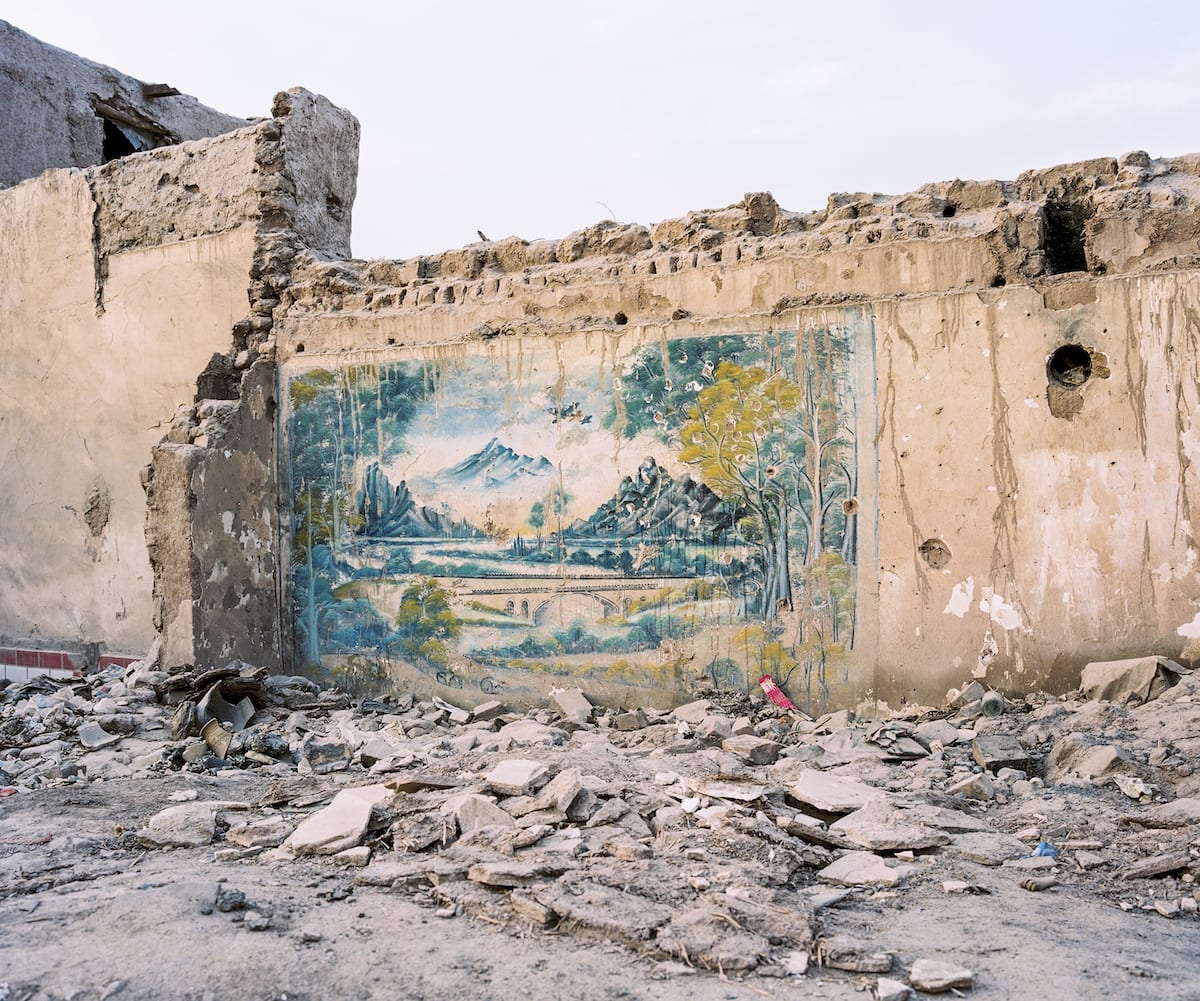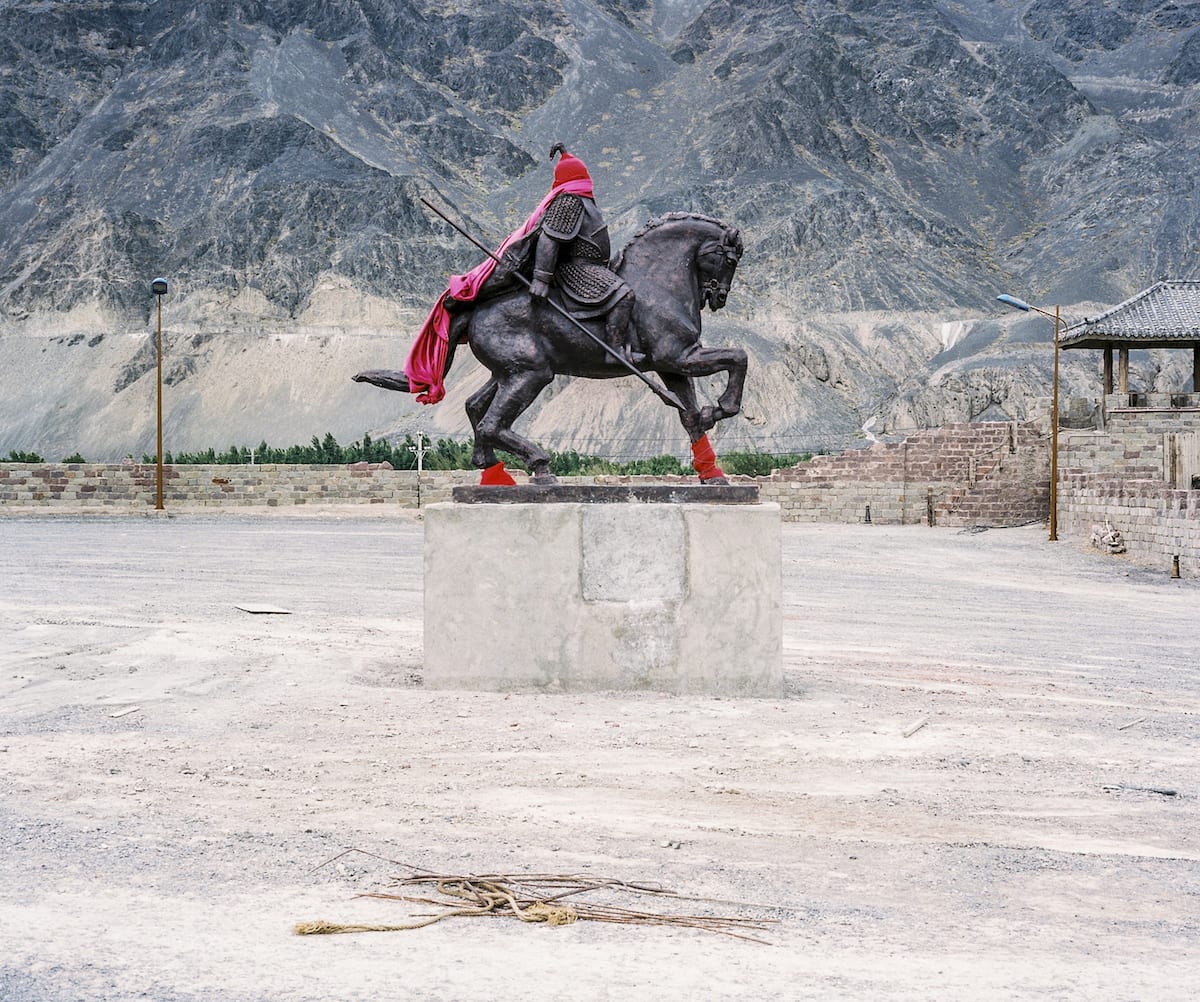Xinjiang, an administrative district on the western border of China, is seven times the size of the UK. The ancient Silk Road ran through this vast area, which is now home to dozens of minority ethnic and cultural groups scattered throughout the 10 per cent of the region that is habitable. Shanghai-based French photographer Patrick Wack spent several months in this remote area of a country that had been his base for 10 years.
“First and foremost,” he explains, “I wanted to go on a journey, and I wanted it to address China without looking like the China that people usually get to see.” The country that he presents is, on one hand, industrially modern, with huge machinery plants and gas fields with lines of nodding donkey pumps stretching towards infinity. On the other, we see expansive rural landscapes and working lives; in one photo, there is a crude, wooden crucifix in the foreground, unusual for a mainly Buddhist and officially atheist country.
The English translation of Xinjiang – New Frontier – led Wack to “borrow the romanticised notion of the American Frontier”; that great push west by colonial settlers in the 18th and 19th centuries. This figurative link to US history came to underpin his project, hinted at by its title, Out West. “The expansion to the west, the founding myth of the United States, happened while the country was in the process of becoming a power to be taken account of,” Wack explains. “Today, as China is in the process of becoming a superpower, it too has turned to its western horizon.”
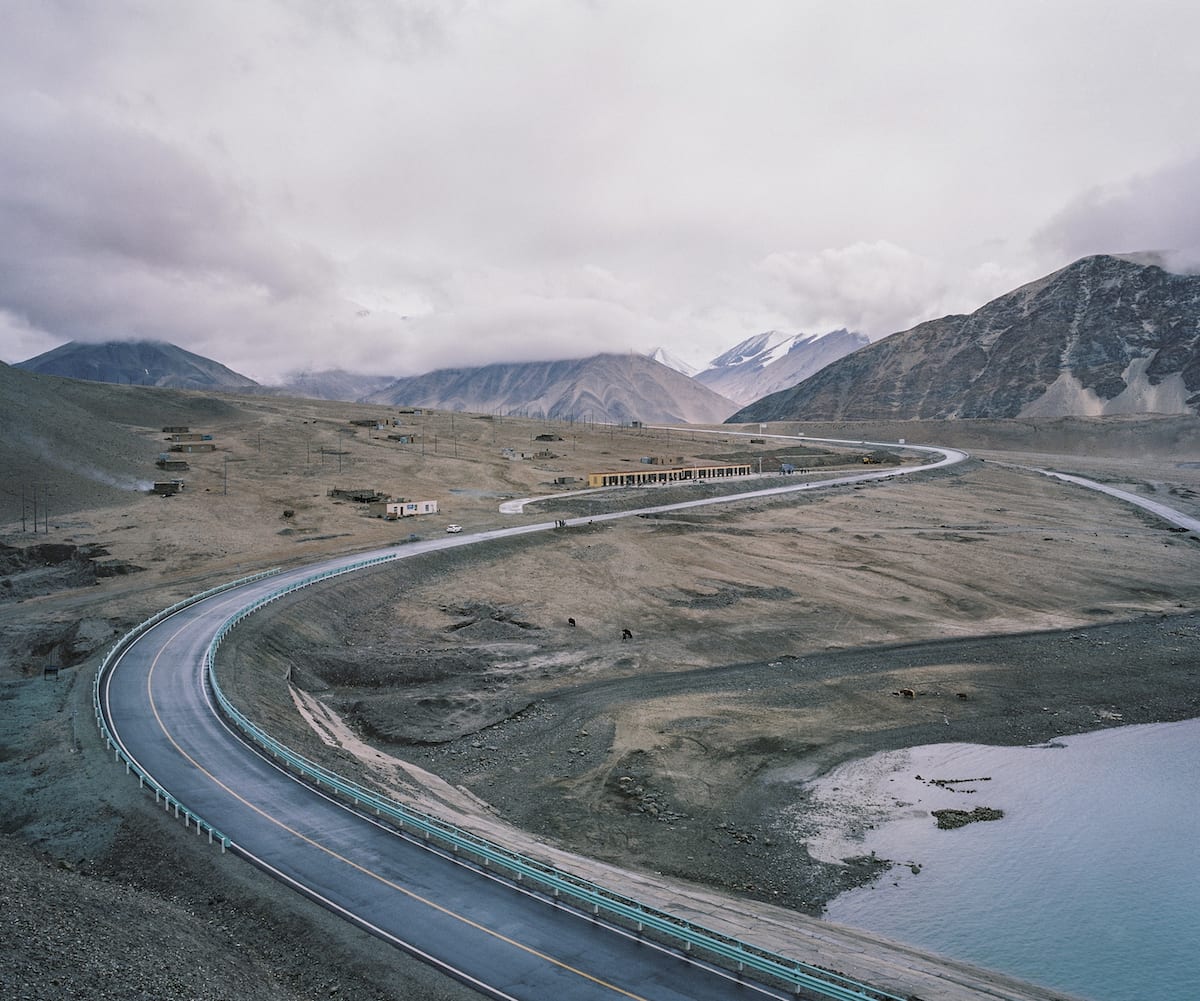
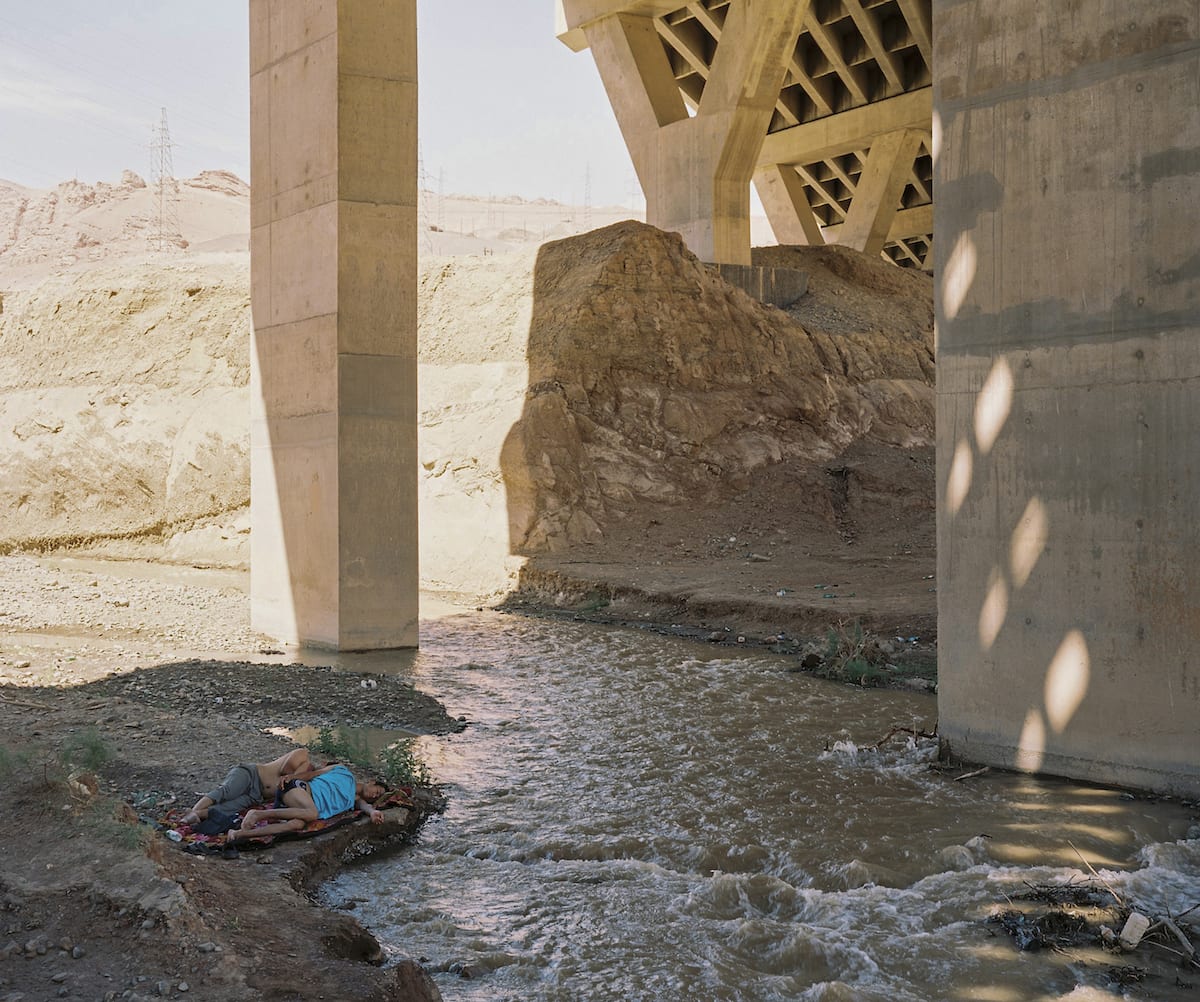
Although Wack’s project was not intended to be a historical survey, there are signs in Out West – the construction of mega industrial structures and buildings – of something that will eventually have repercussions for the rest of the world. Chinese President Xi Jinping has invested $900billion in the Silk Road Economic Belt, an infrastructure network to link China with central Europe and reopen the ancient Silk Road trading route. To this end, the government has been detaining and corralling Uyghur Muslims in a forced sinicisation – the acceptance of Han Chinese culture – which falls under the UN definition of crimes against humanity.
Wack is conscious of the issues at play: “I felt nothing equalled the beauty of the region so much as the infinite sadness you feel when you are there. Everywhere you go, the atmosphere is heavy because people feel trapped. I hope the series conveys that dual feeling of beauty and anxiety in some way.”
This article was originally published in issue #7882 of British Journal of Photography magazine. Visit the BJP Shop to purchase the magazine here.
–
